The Hidden Gardens of Paris
Two hundred years ago, when Emperor Napoleon III transformed Paris into a modern metropolis, he singularly championed public parks. He gifted two former hunting grounds—the Bois de Boulogne at the western edge of the city and the Bois de Vincennes on the eastern periphery—to expand the city limits. Linking these parks to the historic Tuileries and Luxembourg gardens, he provided Parisians and tourists alike with places to stroll, rest and play throughout the year. Less well known, is the fact the Napoleon III tucked small squares and gardens into each of the twenty arrondissements, so that every Parisian has his or her own favorite local paradise. Nestled into corners, off beaten paths, these lesser known gardens of Paris are not necessarily secret, but hidden. They each offer unexpected treats, a place to watch birds, discover heritage roses, or a quiet place to read while waiting for a train. The trick is to find them. Here’s a guide to our favorite spots so that you can enjoy the hidden gardens of Paris.
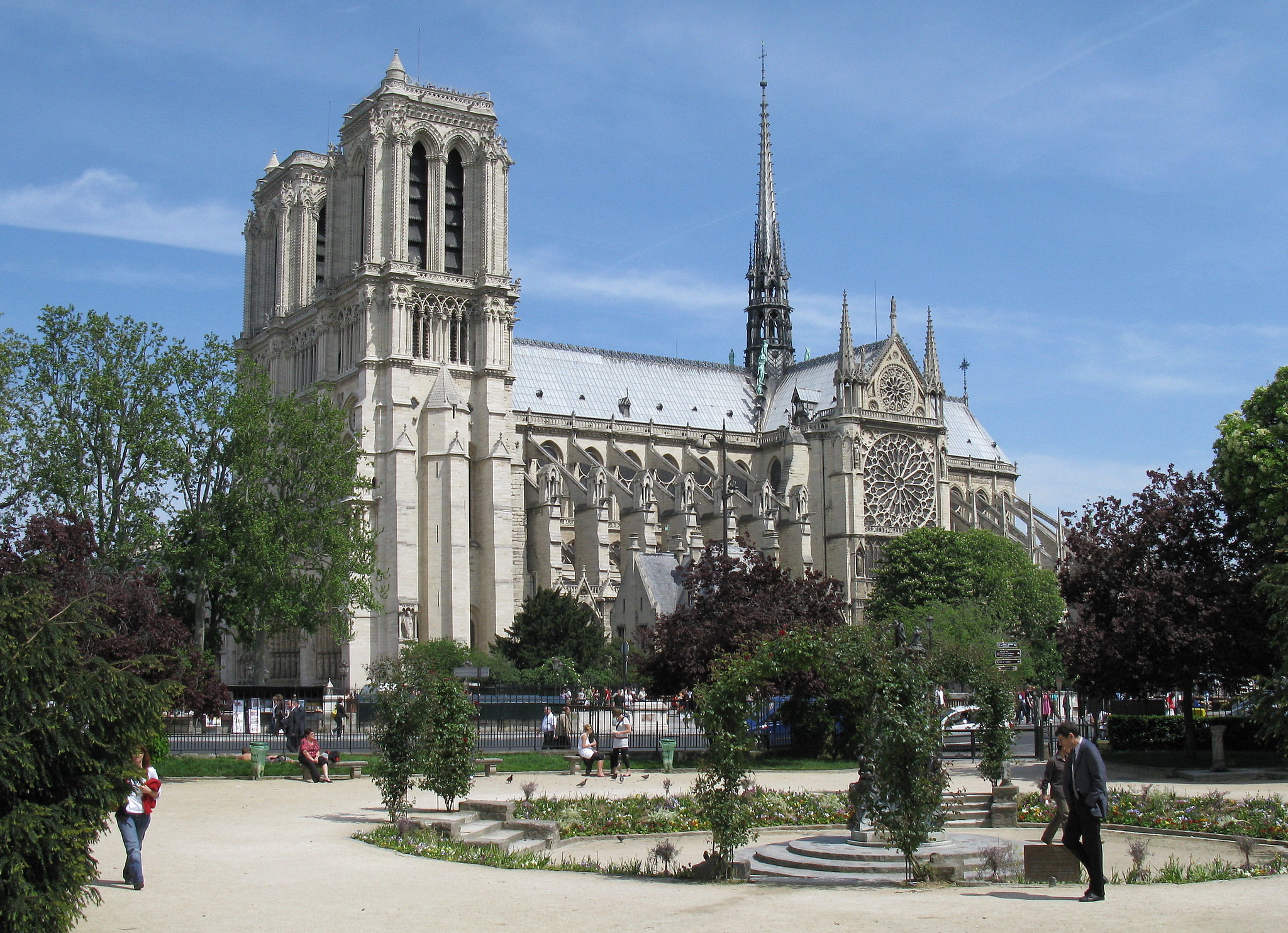
Square Rene Viviani, Spencer Means / Flickr
The Square René-Viviani
Located on the Left Bank across from Notre-Dame, the Square René Viviani is a tranquil square that features what is said to be one of the oldest trees in Paris—a false acacia brought to France from Virginia in 1601—still standing in this spot. From the park benches one of the best views in Paris—Notre-Dame on the right and St.-Julien-le-Pauvre, a tiny church built in the same era, on the left. The local park is a quiet place to contemplate the restoration of the city’s most beloved (and unfortunately scarred) cathedrals.
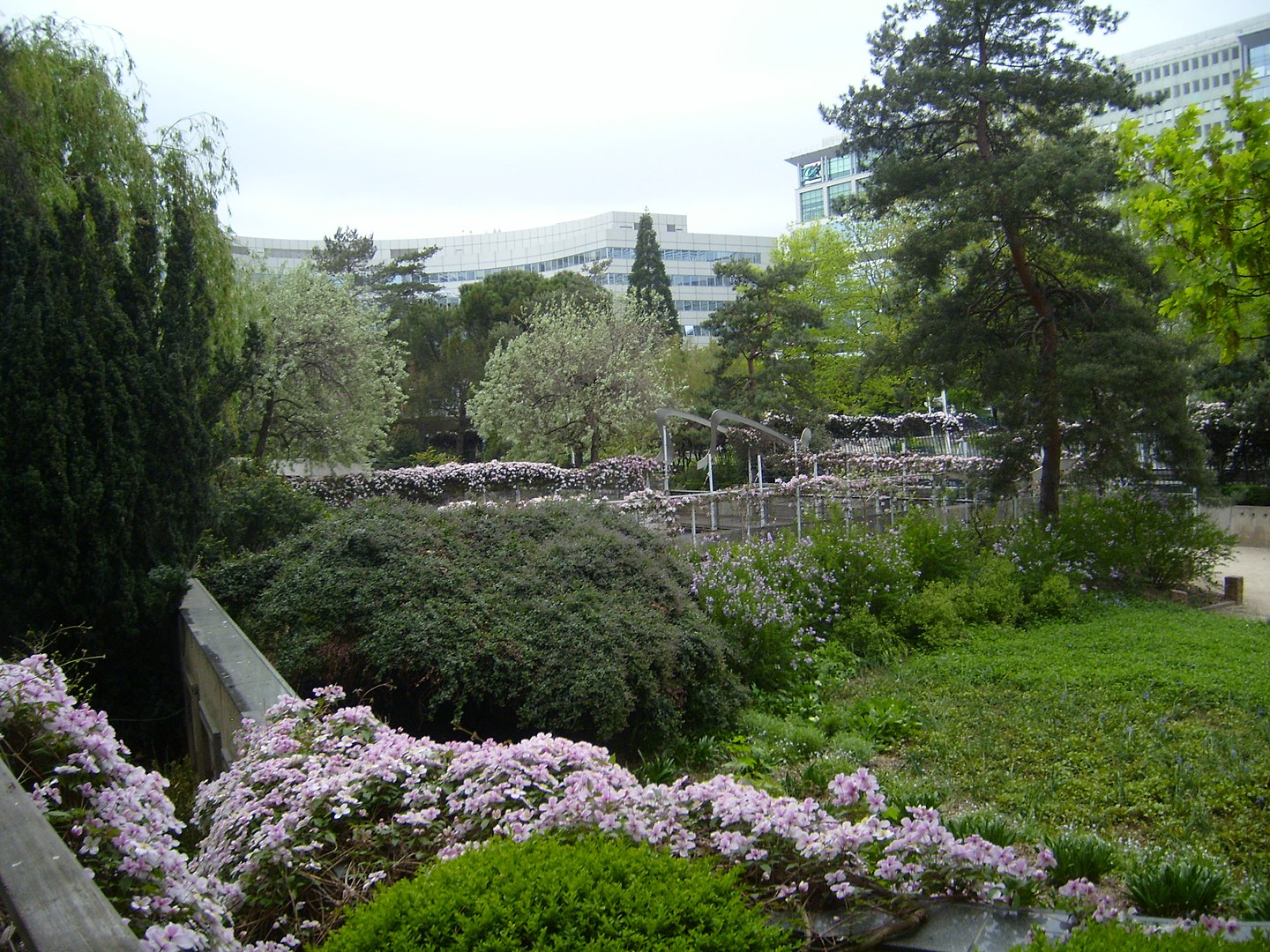
Jardin Atlantique, SiefkinDR / CC
Jardin de l’Atlantique
Ever wonder what to do when waiting for a train at Gare Montparnasse? Follow the signs and climb up the stairs to the Atlantic Garden, planted above the Montparnasse railway station! Populated with trees and shrubs from the west of France—where these trains from this station are headed—this garden wonderfully evokes Atlantic Coast. Opened in 1994 and a technological wonder, the park is designed to replicate a green “ship” floating between office towers, with lampposts standing in as masts and a pair of raised walkways recreating the bridge of a ship.
In the center of the garden, surrounded by a lawn, is a small square called the Isle of the Hesperides, the legendary islands believed by the Ancient Greeks to be to the west of the Pillars of Hercules. In the “island” is a fountain, la Fontaine des Hesperides, made by the sculptor Jean-Max Llorca. Surrounded by jets of water, it’s composed of several gigantic meteorological instruments for measuring rain, temperature, wind and atmospheric pressure. On the east side is a series of small thematic gardens, each with different types of vegetation that include swaying grass, aquatic plants, flowers in blue and mauve and pine trees from the coast.
Address: Place Raoul Dautry, 75015 Paris

Maison de l’Amérique latine, Dalbera / Flickr
Maison d’Amerique Latin
On Boulevard Saint-Germain, the Maison de l’Amérique Latine is comprised of two former 18th century hôtels particuliers, the Hôtel de Varengeville and the Hôtel Amelot de Gournay, each of them featuring splendid French gardens. The estate is now dedicated to Latin American culture, where temporary exhibitions are often on display. After visiting the often provocative works inside, you can enter shady terrace and expansive lawn. In May 2021, La Maison de l’Amérique Latine asked chef Alain Ducasse to oversee the creation of the restaurant Rech in this prestigious space. Today, Chef Thierry Vassier directs the famous fish-focused restaurant.
Address: 217, boulevard Saint-Germain, 75007 Paris

Hôtel Particulier Montmartre / Facebook
Hôtel Particulier Montmartre
You will need to climb to the top of the Butte Montmartre to uncover one of the most beautiful secret spots in Paris. Tucked behind avenue Junot is is a large garden, which has an old-school pétanque area and a vegetable garden. Within this bucolic setting is l’Hotel Particulier Montmartre, a former country house turned boutique hotel, whose interiors were designed by Pierre Lacroix. Locals come to spend long summer evenings, with cocktails in hand and gourmet meals on table.
Address: 23, avenue Junot, Pavillon D, 75018 Paris
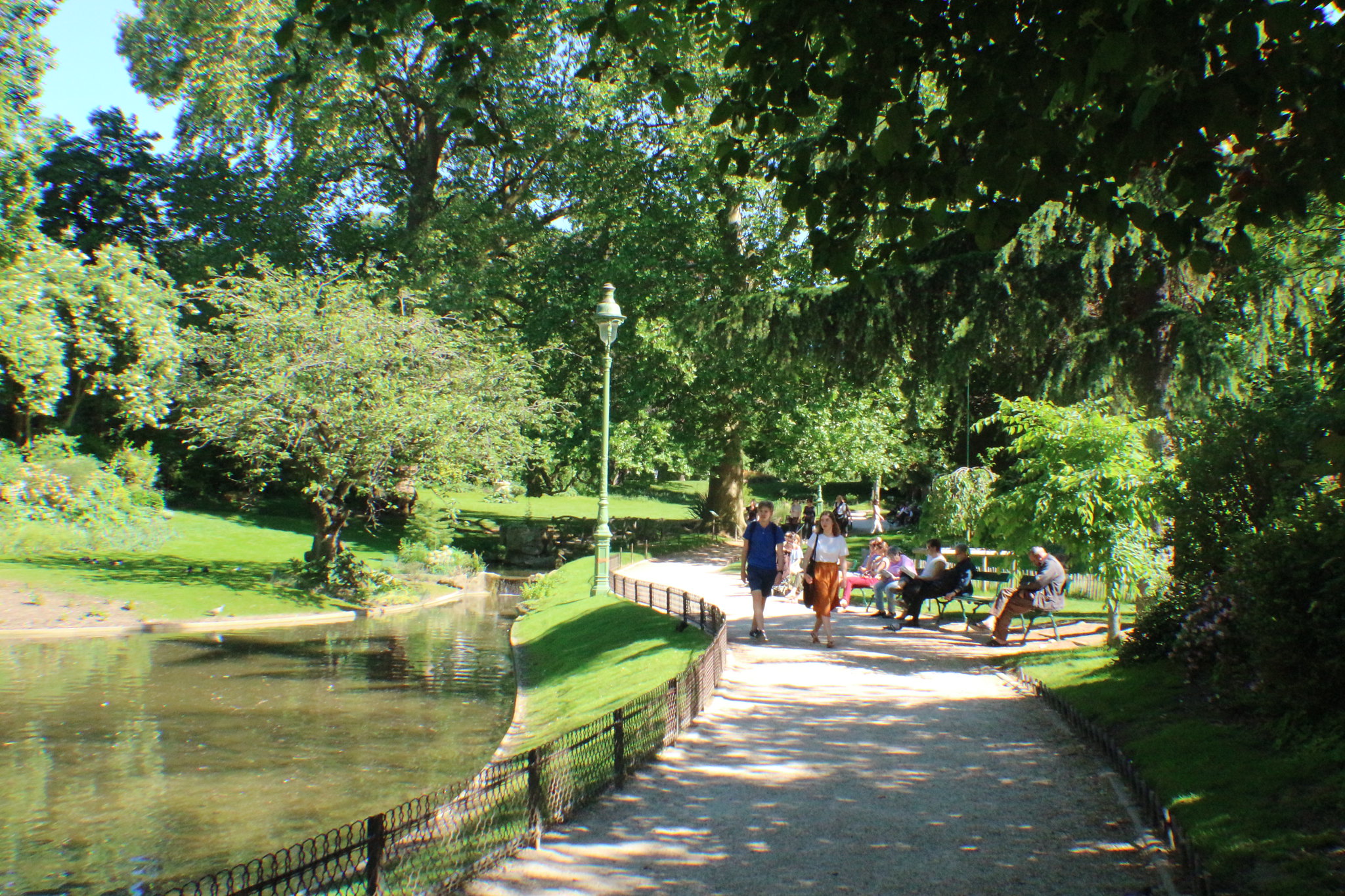
Square des Batignolles
Square Batignolles & Park Martin Luther King
Occupying four acres of the 17th arrondissement, the refined Square des Batignolles brings you back to the nineteenth century. Amidst the undulating lawns of this English-style garden, are trees dating from the 1830s. A single palm tree is stored inside a glass gazebo. Playgrounds for children and a wandering stream for ducks and geese make this a great stop for a stroll. Not far from it is the Parc Martin-Luther-King, lcated on former railroad grounds redesigned by Jacqueline Ossty. Sustainable principles underpin the design of the park, whose features include low maintenance plants, solar panels, wind turbines, reconstituted materials for walkways and rainwater harvesting.
Address: Square des Batignolles, 75017 Paris
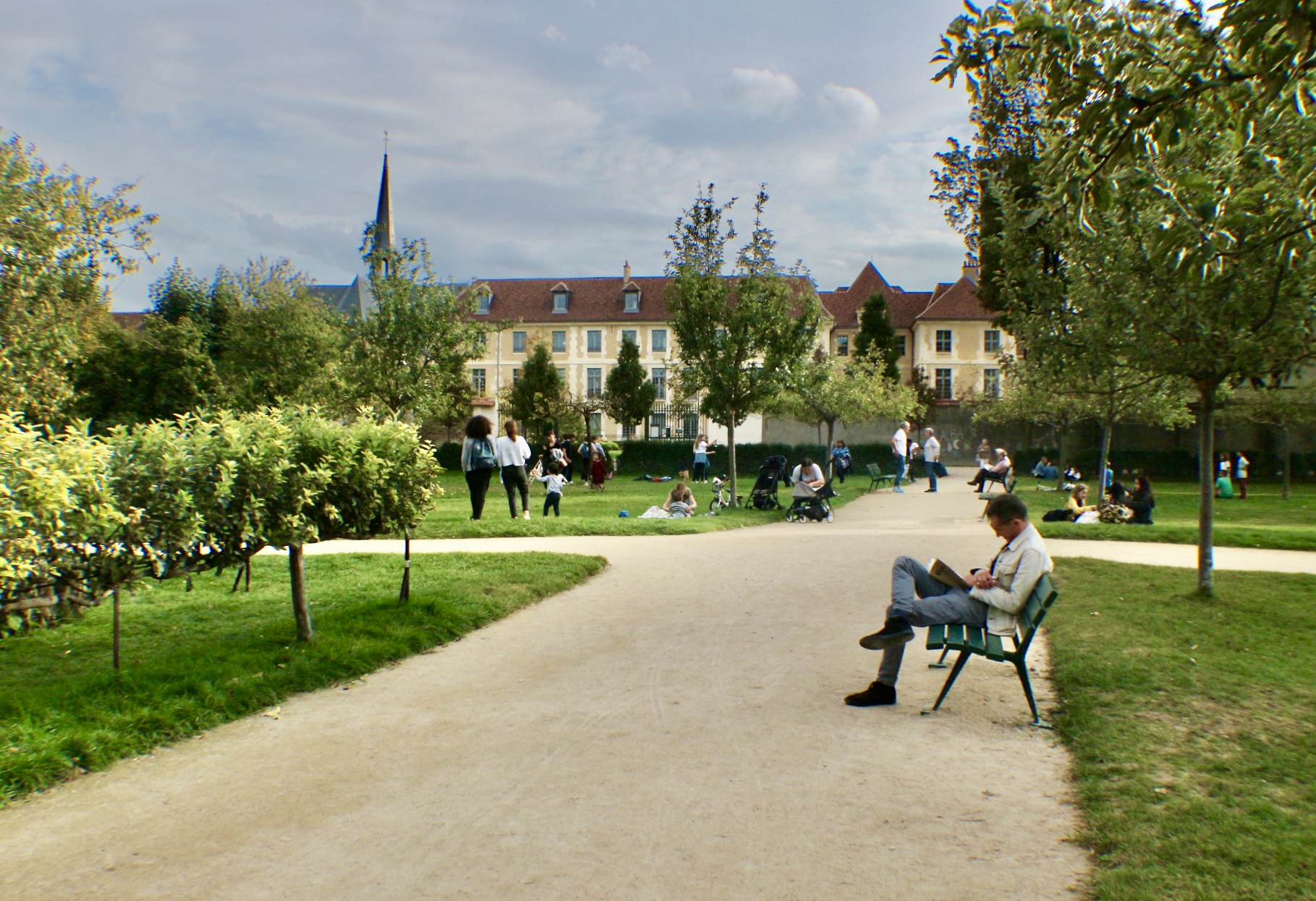
Jardin Catherine Labouré
Jardin Catherine Labouré
This garden is named after a young 19th-century nun to whom the Virgin Mary was said to have appeared as she tended the kitchen garden of the adjacent convent. These days the garden’s visitors are far less spiritual – mainly Parisians wanting to relax in the 7,000-m² expanse of lawns and greenery. The garden’s fruit trees, vine-covered pergola and vegetable garden have survived the passage of time. It is an attractive spot in summer for an outing with friends or family, to sunbathe on the lawns or to walk along the cross-shaped outline showing where the convent once stood.
Address: 29 rue de Babylone – Impasse Oudinot, 75007 Paris
Interested in visiting these or other impressive gardens in Paris. Join garden historian Dr. Susan Taylor-Leduc as she reveals the history and splendor of the best gardens in and around Paris in the tours of Picturesque Voyages. See tour options here or contact us to design a custom tour.

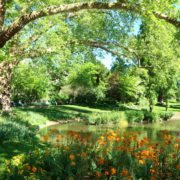
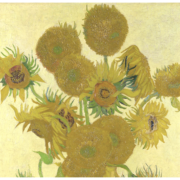




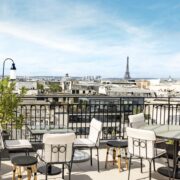


Leave a Reply
Want to join the discussion?Feel free to contribute!